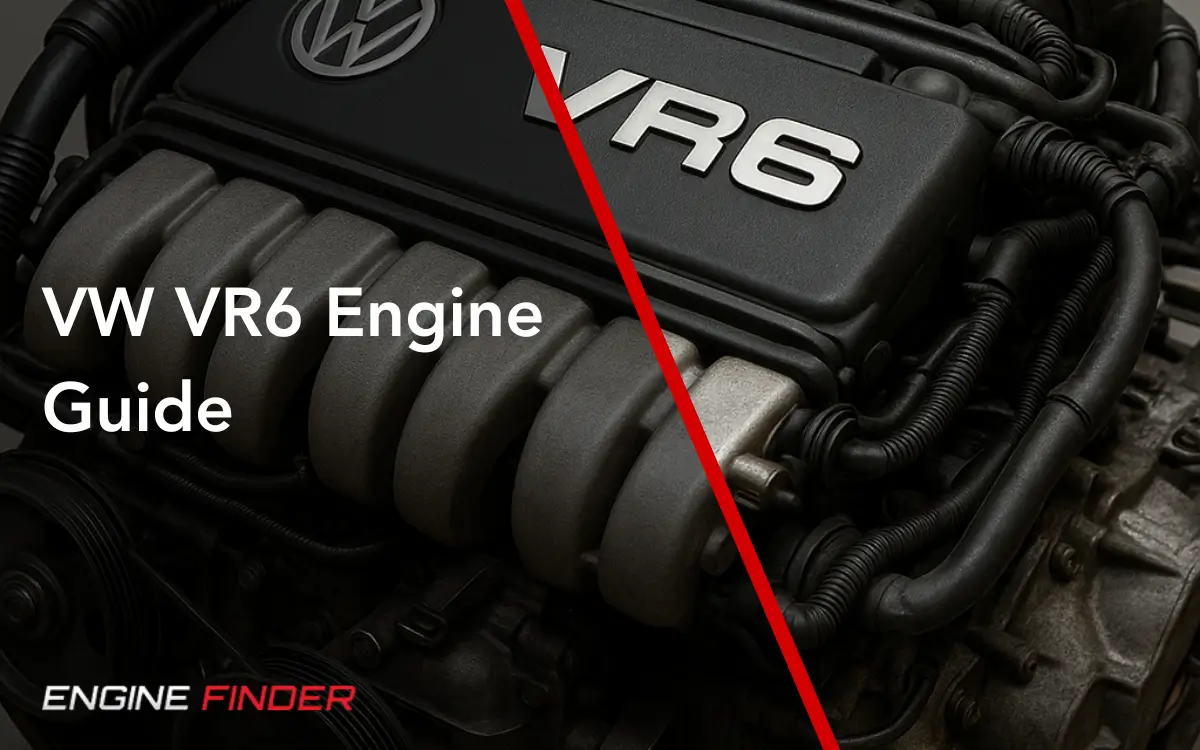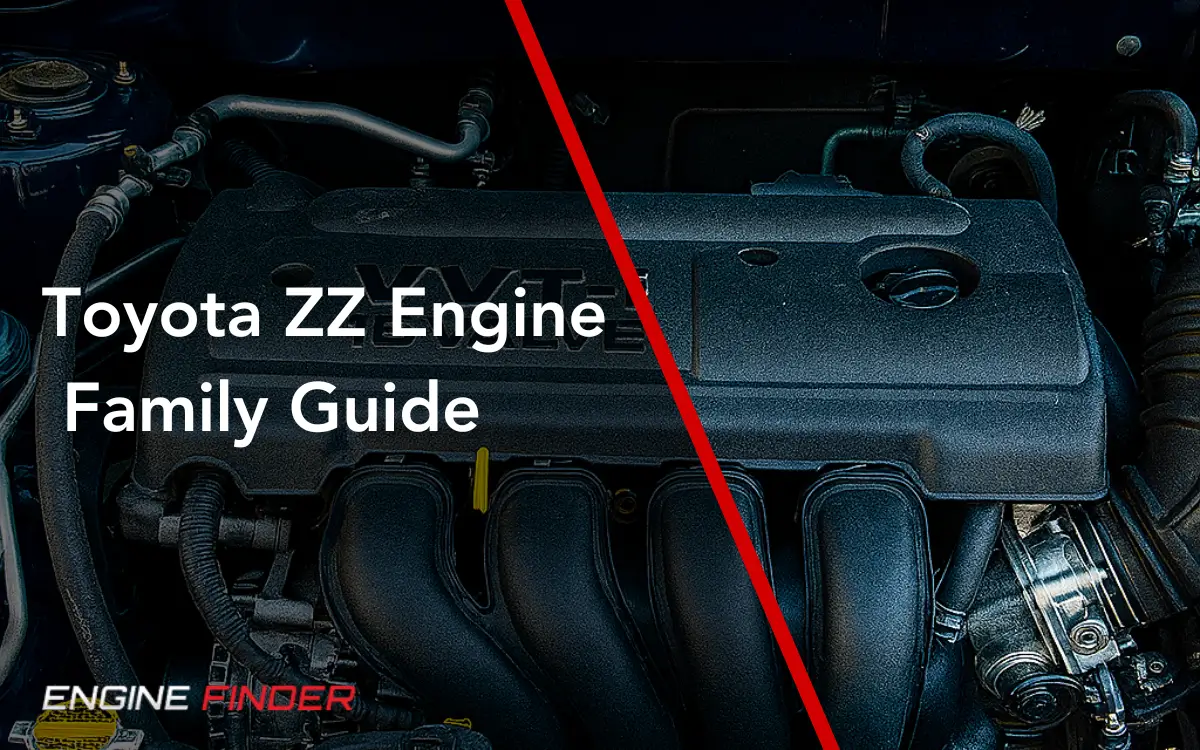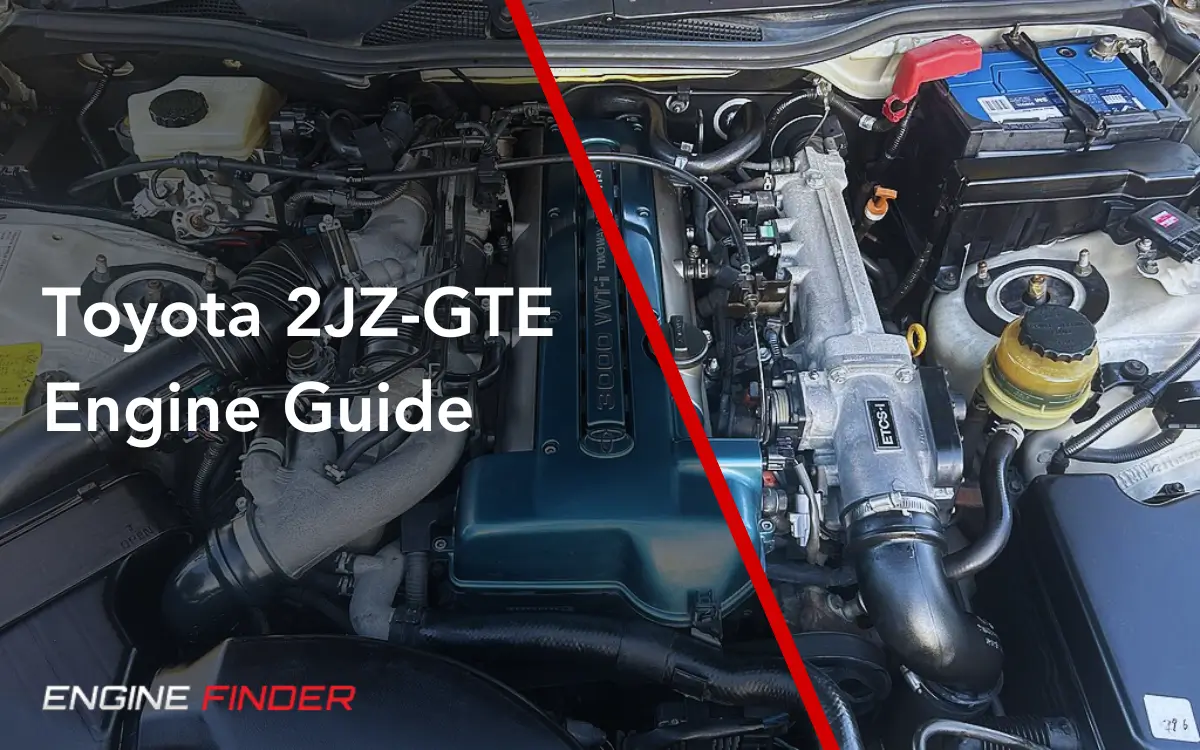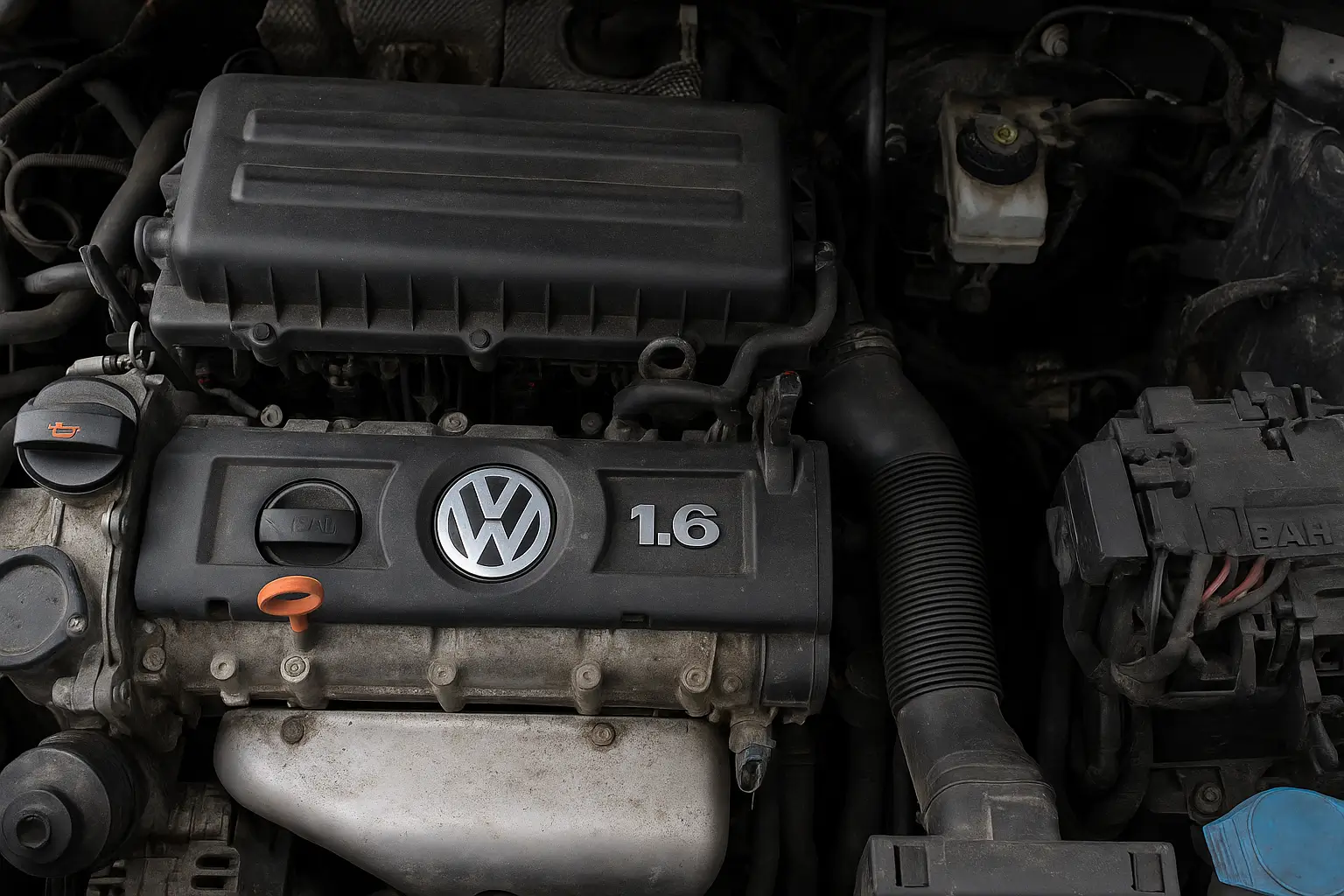
Volkswagen VR6 Engine Guide: The Revolutionary Narrow-Angle Six-Cylinder
Key Takeaways
| Aspect | Details | Significance |
|---|---|---|
| Revolutionary Design | 10.6-15° narrow angle, single cylinder head | Enabled 6-cylinder power in compact FWD applications |
| Production Legacy | 1991-2024, 33 years of continuous production | One of the longest-running performance engine families |
| Unique Architecture | ”Verkürzt Reihenmotor” - shortened inline engine | Best of both V6 and inline-6 characteristics |
| Performance Evolution | 172-295hp naturally aspirated, 295hp turbocharged | Consistent power growth over three decades |
| Wide Applications | 30+ vehicle models across 7 brands | From economy cars to supercars and motorcycles |
The Volkswagen VR6 engine stands as one of the most innovative and enduring engine designs in automotive history. Produced from 1991 to 2024, this unique narrow-angle six-cylinder powerplant revolutionized the industry by enabling six-cylinder performance in compact, front-wheel-drive applications that previously could only accommodate four-cylinder engines.
Decoding “VR6”: The name combines German words “Verkürzt” (shortened) and “Reihenmotor” (inline engine), perfectly describing its hybrid nature - a V-engine configuration shortened to the width of an inline engine through its revolutionary narrow angle design.
Unlike traditional V6 engines with their 45-90° bank angles requiring complex dual-head construction, the VR6’s narrow 10.6-15° angle allows a single cylinder head to serve all six cylinders, dramatically reducing manufacturing costs while maintaining exceptional performance characteristics.
Revolutionary VR6 Interactive Guide
VR6 Engine Interactive Explorer
Explore the complete story of Volkswagen's revolutionary VR6 engine through interactive visualizations and technical insights
VR6 Evolution Timeline
33 years of continuous development and refinement
What Is So Special About A VR-6 Engine?
What Is So Special About A VR-6 Engine?
Volkswagen VR6 Engine Specifications
| Specification | Early VR6 (1991) | Modern VR6 (2008) | Turbocharged (2017) |
|---|---|---|---|
| Engine Code | AAA | BWS | EA390 Turbo |
| Displacement | 2.8L (2,792cc) | 3.6L (3,597cc) | 2.5L (2,480cc) |
| Configuration | Narrow V6, SOHC | Narrow V6, DOHC | Narrow V6, DOHC |
| Bank Angle | 15° | 10.6° | 15° |
| Block Material | Cast Iron | Cast Iron | Cast Iron |
| Head Material | Aluminum | Aluminum | Aluminum |
| Bore x Stroke | 81.0mm x 90.3mm | 89.0mm x 96.4mm | 83.0mm x 77.0mm |
| Compression Ratio | 10.0:1 | 11.4:1 | 9.8:1 |
| Valvetrain | SOHC, 12 valves | DOHC, 24 valves | DOHC, 24 valves |
| Performance Specifications | |||
| Power Output | 128kW (172hp) @ 5,800 rpm | 220kW (295hp) @ 6,200 rpm | 220kW (295hp) @ 5,500 rpm |
| Torque | 235Nm @ 4,200 rpm | 370Nm @ 3,500 rpm | 500Nm @ 2,500 rpm |
| Fuel System | Multi-Point Injection | FSI Direct Injection | FSI Direct Injection + Turbo |
| Technical Details | |||
| Cylinder Offset | 12.5mm from crankshaft centerline | 12.5mm from crankshaft centerline | 12.5mm from crankshaft centerline |
| Crankshaft | 7 main bearings, 22° journal offset | 7 main bearings, 22° journal offset | 7 main bearings, 22° journal offset |
| Firing Order | 1-5-3-6-2-4 | 1-5-3-6-2-4 | 1-5-3-6-2-4 |
| Firing Interval | 120° | 120° | 120° |
| Valve Sizes (Intake/Exhaust) | 39.0mm / 34.3mm | 35.0mm / 30.0mm | 35.5mm / 30.5mm |
| Management System | Bosch Motronic | Bosch MED | Bosch MED |
| Production Years | 1991-2002 | 2005-2024 | 2017-2024 |
| Weight | ~160kg | ~175kg | ~165kg |
History and Development
Origins and Design Philosophy
The VR6 engine emerged from Volkswagen’s need to offer six-cylinder performance in compact front-wheel-drive vehicles without completely redesigning their existing platforms. Traditional V6 engines were too wide for transverse mounting in cars originally designed for four-cylinder powerplants, while inline-six engines were too long.
Ferdinand Piëch, then head of Audi’s technical development, championed the narrow-angle concept that would become the VR6. The engineering team drew inspiration from earlier narrow-angle engines, including the 1922-1976 Lancia V4 and V8 engines, which were the first successful narrow-angle V engines used in motor vehicles.
Three Distinct Generations
First Generation: 12-Valve Era (1991-1999) The original VR6 debuted in 1991 with the Volkswagen Passat B3 and Corrado, featuring a revolutionary 15° bank angle and two valves per cylinder. This generation used a single camshaft for each cylinder bank without rockers, keeping the design simple and cost-effective.
Second Generation: 24-Valve Evolution (1999-2005) The introduction of four valves per cylinder marked a significant evolution, requiring a more sophisticated valvetrain with one camshaft dedicated to intake valves and another to exhaust valves, using rockers to reach the offset cylinders.
Third Generation: FSI and Beyond (2005-2024) The final generation introduced direct injection (FSI), reduced the bank angle to 10.6°, and eventually added turbocharging in 2017 for the Chinese market, achieving unprecedented specific output of 118hp per liter.
Technical Excellence and Engineering
Revolutionary Design Philosophy
The VR6’s genius lies in its hybrid approach - it combines the compact width of an inline engine with the shortened length of a V-engine. The narrow 15° bank angle (later reduced to 10.6°) allows all six cylinders to share a single cylinder head, dramatically reducing manufacturing complexity and costs compared to traditional V6 engines.
Key Structural Innovations:
- Single cylinder head for all six cylinders
- Cast-iron block with aluminum head construction
- Seven-bearing crankshaft with 22° journal offset
- Cylinder centerlines offset 12.5mm from crankshaft centerline
- Unique 120° firing interval despite narrow angle
Advanced Crankshaft Design
The VR6’s crankshaft features a sophisticated design with journals offset 22° to each other, enabling the narrow bank angle while maintaining the desirable 120° firing intervals of a traditional six-cylinder engine. This engineering masterpiece ensures smooth operation while fitting within the constraints of the narrow-angle architecture.
Crankshaft Characteristics:
- Seven main bearing design for rigidity
- Fully counterweighted for smooth operation
- 22° journal offset for proper firing sequence
- Forged construction in later high-performance variants
- Unique firing order: 1-5-3-6-2-4
Single-Head Innovation
Perhaps the most revolutionary aspect of the VR6 is its single cylinder head design. Unlike traditional V6 engines requiring two separate heads and dual camshaft drive systems, the VR6’s narrow angle permits one head to cover all cylinders, sharing gasket surfaces and cooling passages.
Single-Head Advantages:
- Reduced manufacturing costs (30% savings vs traditional V6)
- Simplified cooling system design
- Single gasket surface reduces leak potential
- Easier maintenance access
- Compact overall package
Engineering Marvel
The VR6’s tilted piston crowns accommodate the shared cylinder head design, with each piston angled to match its cylinder’s orientation. This seemingly simple solution required sophisticated engineering to maintain proper combustion chamber geometry and sealing.
Performance Characteristics
Power Evolution Across Generations
The VR6’s performance characteristics evolved dramatically over its 33-year production run, with power increasing from 172hp in 1991 to 295hp by 2008, representing a remarkable 71% improvement while maintaining the same fundamental architecture.
Performance Milestones:
- 1991: 172hp (61.4 hp/L) - AAA naturally aspirated
- 1994: 188hp (64.8 hp/L) - ABV with increased displacement
- 2000: 201hp (71.8 hp/L) - 24-valve technology introduced
- 2008: 295hp (81.9 hp/L) - FSI direct injection peak
- 2017: 295hp (118 hp/L) - Turbocharged variant
Distinctive Sound Character
The VR6 became legendary not just for its packaging efficiency but for its distinctive exhaust note. The narrow angle and uneven firing intervals create a unique sound signature often compared to Porsche’s flat-six engines, earning it a devoted following among enthusiasts worldwide.
Sound Characteristics:
- Distinctive growling exhaust note
- Uneven firing intervals create unique rhythm
- Often compared to Porsche flat-six sound
- Highly sought after by enthusiast community
- Immediately recognizable at idle and under load
Real-World Performance
In practical applications, the VR6 delivers exceptional drivability with strong low-end torque and smooth power delivery throughout the rev range. The engine’s broad torque curve makes it equally suitable for relaxed cruising and spirited driving, contributing to its widespread adoption across Volkswagen Group’s model range.
Performance Advantage
The VR6’s square bore-and-stroke dimensions in early variants (81mm x 90.3mm) provide an ideal balance between high-RPM capability and torque production, while later oversquare designs favor top-end power delivery.
Vehicle Applications and Legacy Models
Volkswagen Applications
The VR6 found its most extensive use across Volkswagen’s model range, from the original Passat and Corrado to modern SUVs and sports cars:
Iconic Volkswagen Models:
- Corrado VR6 (1991-1995): The original showcase vehicle that introduced the world to VR6 technology
- Golf VR6 (1992-1998): Hot hatch legend that democratized six-cylinder performance
- Passat VR6 (1991-2015): Long-running executive car application spanning multiple generations
- Touareg VR6 (2002-2018): SUV application demonstrating versatility
- Phaeton W12 (2002-2016): Luxury sedan using W12 (twin VR6) configuration
Audi and Porsche Integration
The VR6’s compact design made it attractive to other Volkswagen Group brands:
Audi Applications:
- TT VR6 (2003-2010): Sports car application emphasizing performance
- A3 VR6 (2003-2013): Premium compact with six-cylinder refinement
- Q7 VR6 (2008-2015): Luxury SUV demonstrating broad appeal
Porsche Applications:
- Cayenne VR6 (2003-2018): Entry-level variant of luxury SUV
Unique and Unexpected Applications
Beyond traditional automotive uses, the VR6 found its way into some surprising applications:
Unusual Applications:
- Horex VR6 Motorcycle (2012-present): Unique six-cylinder motorcycle
- Mercedes-Benz Vito (1996-2003): Commercial van application (M104.900)
- Winnebago Rialta (1997-2005): Recreational vehicle motorhome
- Linde Forklifts: Industrial LPG-powered applications
- Artega GT (2009-2012): Boutique sports car
Global Market Reach
The VR6’s applications spanned multiple continents and market segments:
| Market | Primary Applications | Notable Variants |
|---|---|---|
| Europe | Full range including diesels | Golf R32, Passat W8 |
| North America | Focus on larger displacements | Touareg, CC, Atlas |
| China | Exclusive turbocharged variants | Teramont 2.5T |
| Rest of World | Limited premium models | Import variants |
Tuning and Modification Potential
Stock Engine Capabilities
While not as extensively modified as some other performance engines, the VR6 responds well to tuning with proper supporting modifications. The robust cast-iron construction and conservative factory tuning provide headroom for increased output.
Stock Engine Modification Limits:
- Conservative: 200-225hp (reliable daily driver)
- Moderate: 250-275hp (weekend enthusiast)
- Aggressive: 300-350hp (heavily modified with internals)
Popular Modification Paths
The VR6 tuning scene has developed proven upgrade paths for various performance goals:
Stage 1 Modifications (200-225hp):
- Cold air intake system
- Performance exhaust system
- Engine management tuning
- Boost controller (supercharged variants)
- Cost: R15,000-R25,000
Stage 2 Modifications (250-300hp):
- Supercharger or turbocharger kit
- Upgraded fuel system
- Internal engine refresh
- Intercooler system
- Cost: R40,000-R80,000
Stage 3+ Modifications (300hp+):
- Built bottom end with forged internals
- Custom forced induction system
- Standalone engine management
- Race fuel system
- Cost: R100,000-R200,000+
Forced Induction Applications
The VR6’s robust construction makes it an excellent candidate for forced induction:
Supercharger Applications:
- Volkswagen’s own R32 variants
- Aftermarket centrifugal supercharger kits
- Excellent low-end torque enhancement
- Maintains linear power delivery
Turbocharger Applications:
- Factory 2.5T variant from 2017
- Aftermarket single turbo conversions
- Significant power potential
- More complex installation
Modification Considerations
VR6 modifications require careful attention to the narrow-angle design’s unique characteristics. The single cylinder head design can create heat management challenges under extreme power levels, requiring upgraded cooling systems.
Maintenance and Service Requirements
Routine Maintenance Schedule
The VR6’s longevity depends on adherence to Volkswagen’s maintenance intervals and use of quality components:
| Service Type | Interval | Components | Estimated Cost (ZAR) |
|---|---|---|---|
| Oil Changes | 10,000-15,000 km | Oil, filter | R600-R900 |
| Timing Chain | 200,000 km | Chain, tensioners, guides | R12,000-R18,000 |
| Valve Adjustments | 60,000 km | Valve clearances (12v only) | R2,500-R4,000 |
| Fuel System | 80,000 km | Filters, pump service | R3,500-R5,500 |
| Cooling System | 100,000 km | Radiator, hoses, thermostat | R4,500-R7,000 |
| Carbon Cleaning | 80,000 km | FSI direct injection cleaning | R3,000-R5,000 |
Critical Maintenance Items
Oil Quality: Use VW-approved 5W-30 or 0W-30 synthetic oil Fuel Quality: Premium unleaded fuel (95+ octane) recommended Cooling System: Monitor for narrow-angle heat management Timing Chain: Later models use chain vs belt (more durable) Carbon Buildup: Direct injection engines require periodic cleaning
Common Service Issues
While generally reliable, certain VR6 components require attention:
Early Models (12-valve):
- Timing chains: Can stretch with age and high mileage
- Coil packs: Early failure common on older units
- Oil leaks: Valve cover and oil pan gaskets
- Thermostat: Can fail causing cooling issues
Later Models (24-valve/FSI):
- Carbon buildup: Direct injection engines affected
- Timing chain tensioners: Can fail causing noise
- Water pumps: Plastic impellers can fail
- PCV system: Requires periodic service
Unique VR6 Maintenance Considerations
The narrow-angle design creates some unique service requirements:
- Heat management: Single head design concentrates heat
- Access challenges: Some components difficult to reach
- Specialized tools: VR6-specific timing and service tools required
- Cooling system: Critical due to concentrated heat generation
Modern Relevance and Legacy
The End of an Era
Volkswagen’s announcement that VR6 production would end in 2024 marked the conclusion of one of the automotive industry’s most successful engine families. After 33 years of continuous production and evolution, the VR6’s unique architecture finally succumbed to modern efficiency and emission regulations.
Market Value and Collectibility
VR6-powered vehicles, particularly early icons like the Corrado VR6 and Golf VR6, have become increasingly collectible:
Current Market Values (South Africa, 2025):
- Corrado VR6: R180,000-R350,000 (condition dependent)
- Golf Mk3 VR6: R120,000-R250,000
- Golf R32 (Mk4): R200,000-R400,000
- Standalone VR6 engines: R25,000-R60,000
Engineering Legacy
The VR6’s influence extends far beyond its own production:
W-Engine Family Development:
- W8 Engine: Two VR4 banks at 72° (Passat W8)
- W12 Engine: Two VR6 banks at 72° (Bentley, Audi, Phaeton)
- W16 Engine: Two VR8 banks at 90° (Bugatti Veyron, Chiron)
Industry Influence:
- Proved narrow-angle V-engines viable for mass production
- Demonstrated single-head design benefits
- Influenced modern compact V6 development
- Set standards for FWD six-cylinder applications
Alternative Engines for Modern Applications
For enthusiasts seeking VR6-like characteristics in modern builds:
Direct Alternatives:
- Audi 3.0T V6: Modern supercharged V6 with good tuning potential
- BMW N54/N55: Twin-turbo inline-6 with strong aftermarket support
- Ford EcoBoost V6: Turbocharged V6 with broad applications
- Nissan VQ Series: Naturally aspirated V6 with distinctive sound
Similar Philosophy Engines:
- Honda J-Series V6: Reliable and tuneable
- Toyota 2GR-FE: Smooth and durable V6
- Subaru EZ Series: Flat-6 configuration with unique characteristics
While these alternatives offer modern efficiency and technology, none quite replicate the VR6’s unique combination of compact packaging, distinctive sound, and engineering elegance that made it special for over three decades.
FAQ
Why did Volkswagen develop the VR6 instead of using a traditional V6?
Volkswagen needed a six-cylinder engine that could fit transversely in their front-wheel-drive platforms originally designed for four-cylinder engines. Traditional V6 engines with 60-90° bank angles were too wide, while inline-six engines were too long. The VR6’s narrow 15° angle solved both problems while using a single cylinder head to reduce costs.
What does “VR6” actually mean?
“VR6” combines the German words “Verkürzt” (shortened) and “Reihenmotor” (inline engine). It describes an engine that has V-configuration characteristics but is shortened to the width of an inline engine through its narrow angle design.
How does the VR6’s firing order work with such a narrow angle?
The VR6 uses a sophisticated crankshaft with journals offset 22° to each other, enabling the traditional six-cylinder firing order (1-5-3-6-2-4) with 120° firing intervals. The cylinder centerlines are offset 12.5mm from the crankshaft centerline to accommodate this design.
Are VR6 engines reliable for daily driving?
Yes, VR6 engines are generally very reliable when properly maintained. They use robust cast-iron construction and conservative tuning from the factory. Key maintenance items include regular oil changes with quality oil, timing chain service, and cooling system maintenance due to the concentrated heat generation of the single-head design.
What happened to the W-engines that developed from the VR6?
The W-engine family (W8, W12, W16) mostly ended production due to complexity and cost. The W12 continues in some Bentley models, and the W16 remains in Bugatti’s hypercars, but the W8 was discontinued in 2004. Modern efficiency regulations favor simpler, turbocharged designs over complex naturally aspirated engines.
Can you still buy VR6 engines new from Volkswagen?
Limited VR6 components including blocks and heads may still be available through Volkswagen Classic Parts for restoration purposes, but complete new engines are no longer manufactured. The last VR6 engines rolled off production lines in late 2024, ending 33 years of production. For those seeking complete VR6 engines, quality used and refurbished options are available through specialized suppliers - browse our selection of VR6 engines for sale to find the perfect powerplant for your project.
Conclusion
The Volkswagen VR6 engine represents one of the most innovative and enduring achievements in automotive engineering. From its revolutionary debut in 1991 to its final production in 2024, this narrow-angle six-cylinder powerplant redefined what was possible in compact vehicle packaging while delivering the performance and refinement enthusiasts demanded.
The VR6’s legacy extends far beyond its own impressive 33-year production run. It enabled the development of Volkswagen’s entire W-engine family, from the exotic W8 to the legendary W16 that powers Bugatti’s hypercars. More importantly, it proved that innovative engineering could solve complex packaging challenges while maintaining cost-effectiveness and reliability.
Whether you’re an enthusiast seeking a characterful engine with a distinctive sound, a collector pursuing automotive history, or simply someone who appreciates clever engineering solutions, the VR6 stands as a testament to German automotive ingenuity. Its unique narrow-angle design solved a problem that seemed impossible - fitting six-cylinder smoothness and power into spaces designed for four-cylinder engines.
For South African enthusiasts exploring performance engine options, Engine Finder provides access to quality Volkswagen engines for sale across the country. Specifically looking for this legendary powerplant? Browse our selection of VR6 engines for sale from trusted suppliers who understand the significance and potential of these remarkable narrow-angle six-cylinder engines.
The VR6 isn’t just an engine—it’s an engineering philosophy that proved innovation could triumph over convention. In an automotive world increasingly dominated by efficiency over character, the VR6’s distinctive growl and unique personality remind us why some engines become legends that outlive their production runs.
References and Further Reading
Technical Resources
- AutoZine VR6 Technical School - Comprehensive VR6 and W-engine technical analysis and engineering insights
- VR6 Owners Club Technical Information - Detailed Corrado VR6 specifications and technical data
- VW Club of South Africa VR6 Forum - Technical discussions and specifications from the VR6 community
Performance and Tuning Resources
- 034 Motorsport - Professional VR6 tuning components and performance development
- ECS Tuning VR6 Performance - Comprehensive VR6 modification parts and guidance
- VWVortex VR6 Forum - Active enthusiast community for VR6 technical discussions and tuning
Historical and Cultural Resources
- Corrado World VR6 Registry - Global Corrado VR6 owner’s registry and technical resources
- VR6 Owners Club - Dedicated VR6 enthusiast community with forums and technical guides
- The Corrado Forum - European Corrado and VR6 community with technical discussions and parts advice
Related Articles
Explore more insights on similar topics

Toyota ZZ Engine Family: Complete Guide to the 1ZZ, 2ZZ, 3ZZ & 4ZZ
Comprehensive guide to Toyota's ZZ engine family including the high-revving 2ZZ-GE, reliable 1ZZ-FE, and economical 3ZZ/4ZZ variants. Technical specs, applications, and known issues.

Toyota 2JZ-GTE Engine Guide: The Legendary 3.0L Twin-Turbo Powerplant
Complete guide to Toyota's legendary 2JZ-GTE engine. Discover its technical specifications, history, applications, and why it remains the ultimate tuning platform.

Common VW Polo BAH 1.6 Engine Problems: Causes, Symptoms, Solutions
Learn about the most common problems with Volkswagen Polo BAH 1.6 engines, with detailed troubleshooting tips, solutions, and repair costs.
Important Disclaimer
This content is for informational purposes only and is based on research from automotive industry sources. Engine Finder is not a certified automotive repair facility. Always consult with qualified automotive professionals before performing any repairs or maintenance. Improper repairs can result in personal injury, property damage, or vehicle malfunction. We assume no responsibility for actions taken based on this information.
